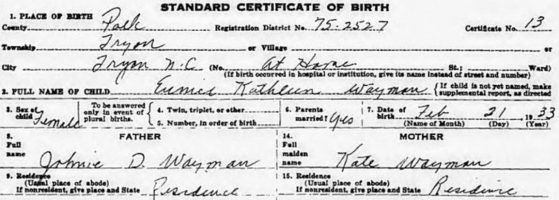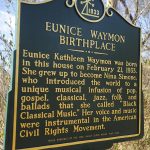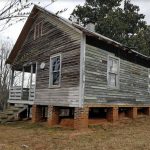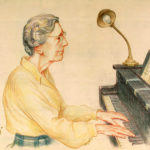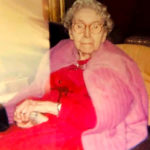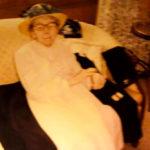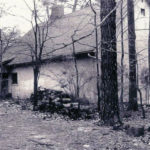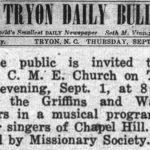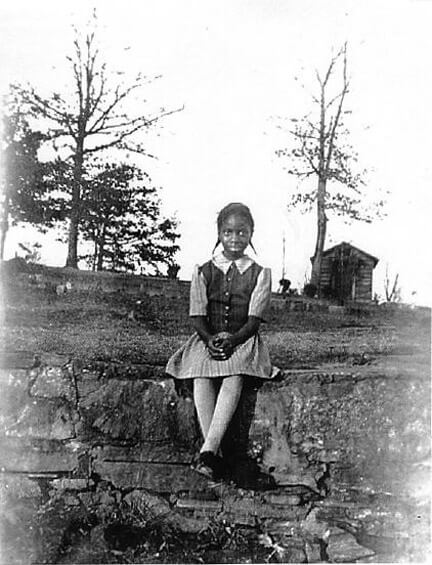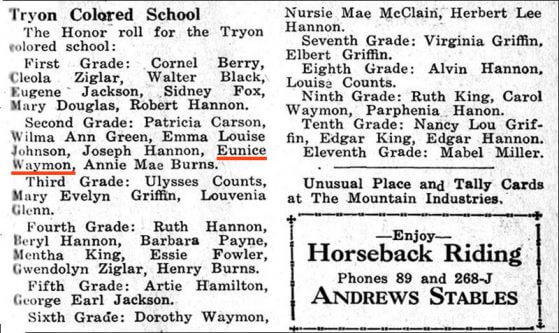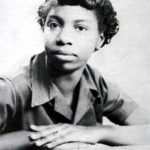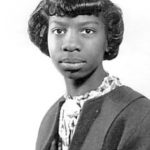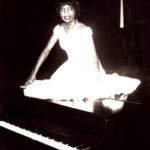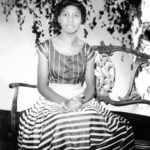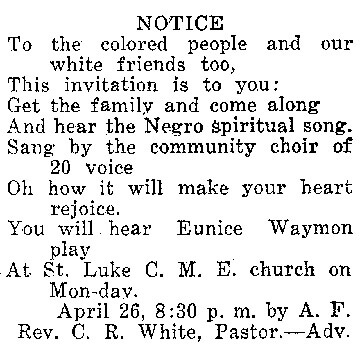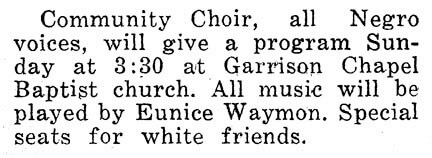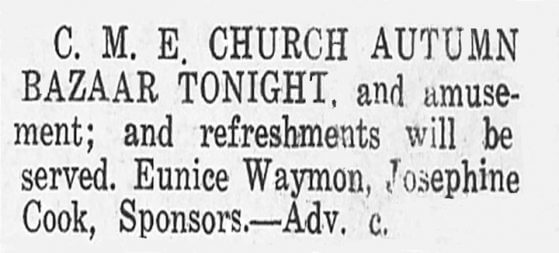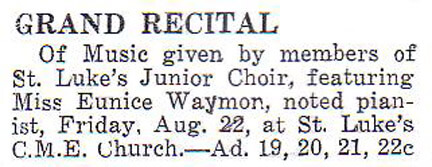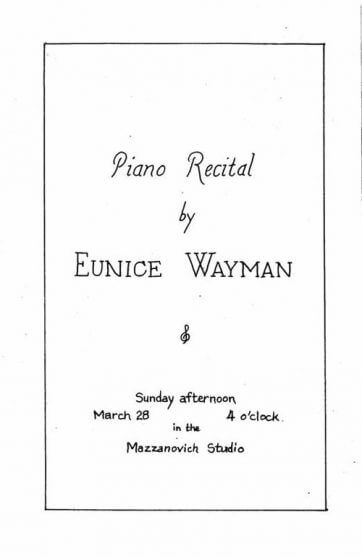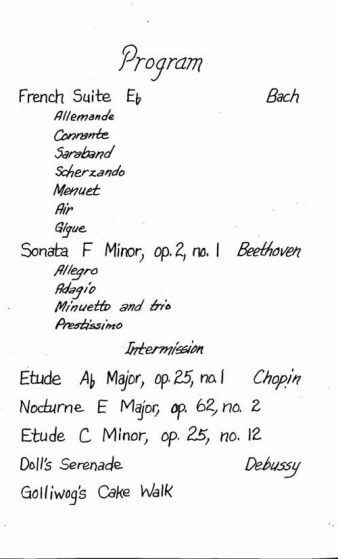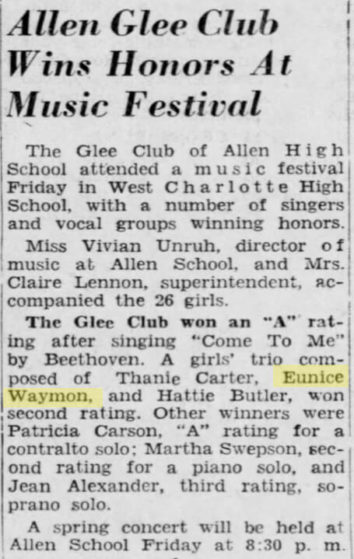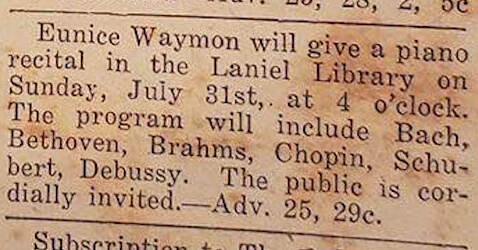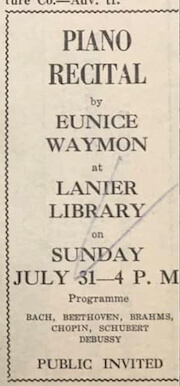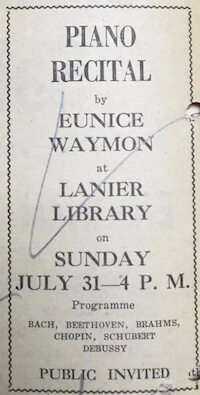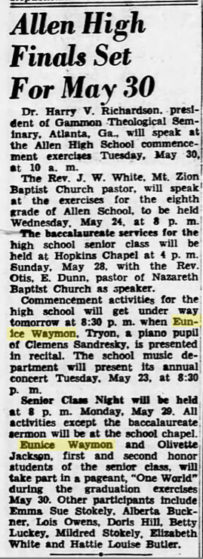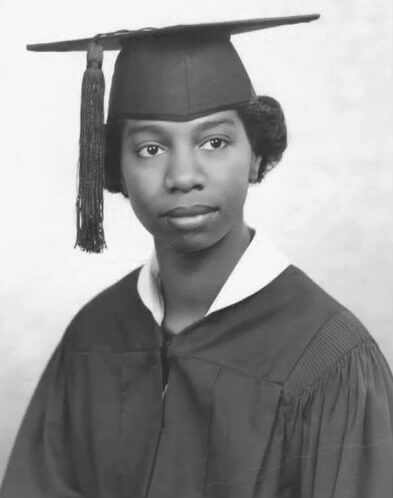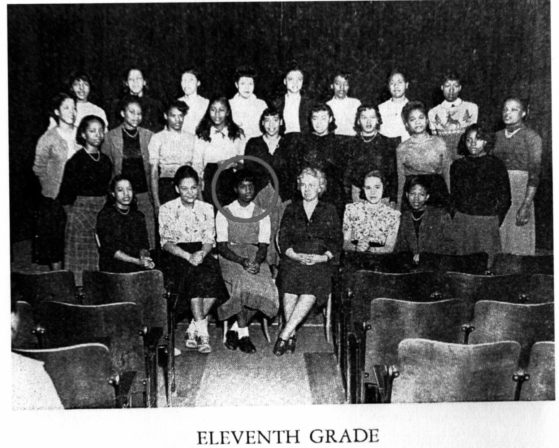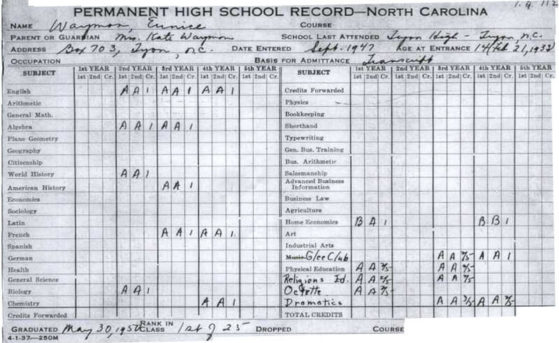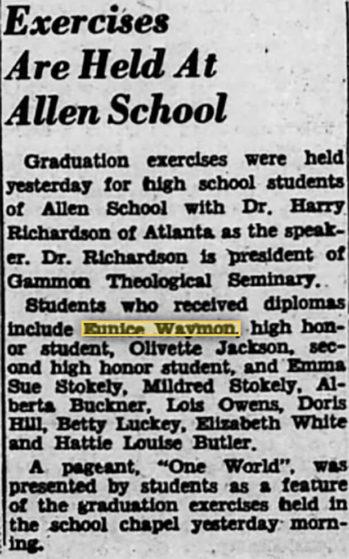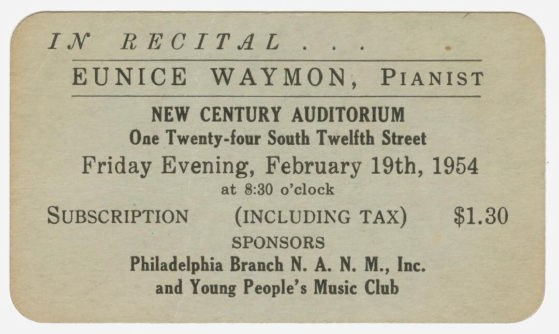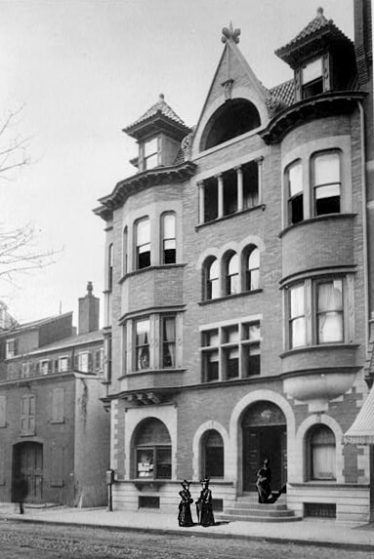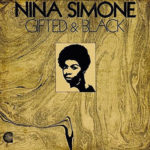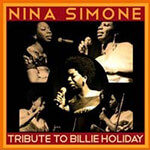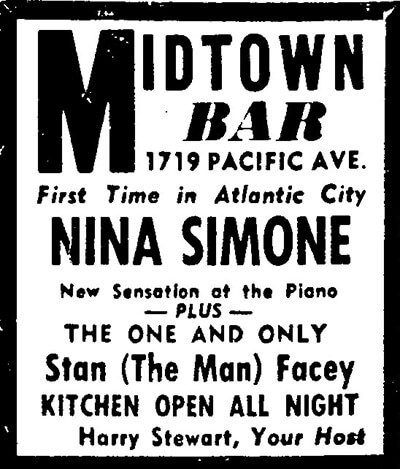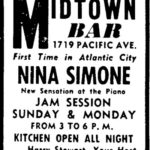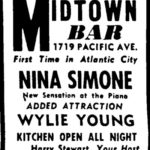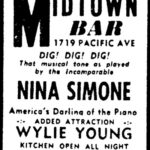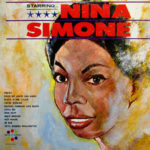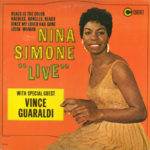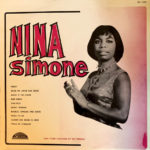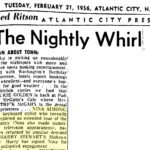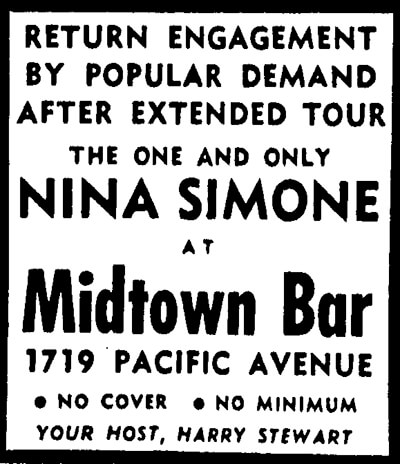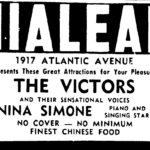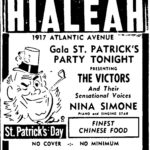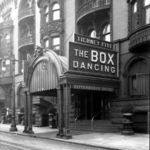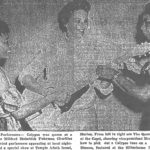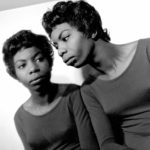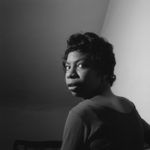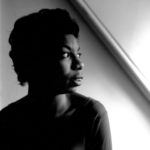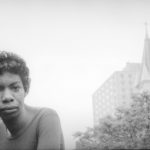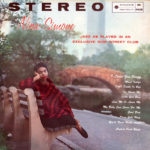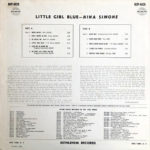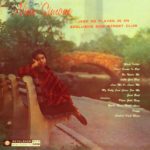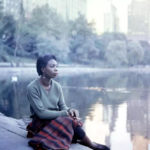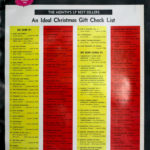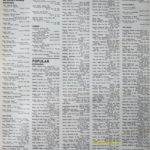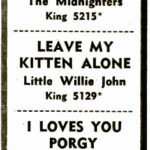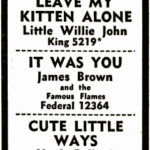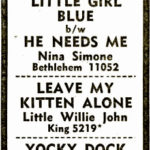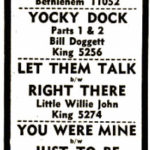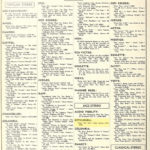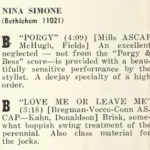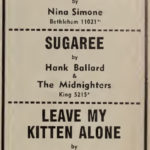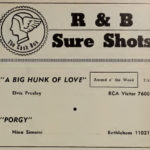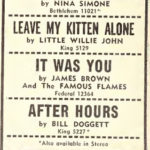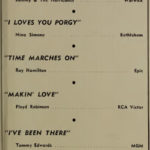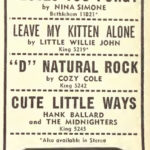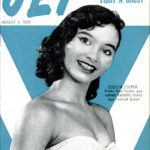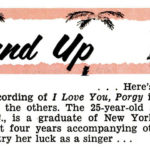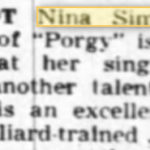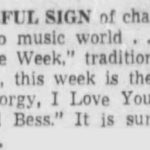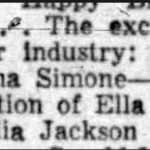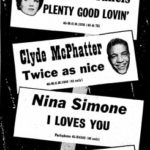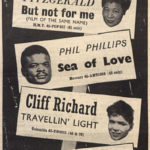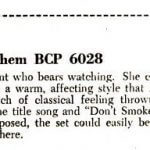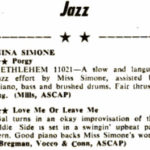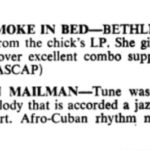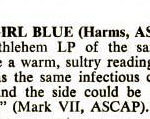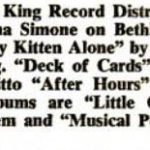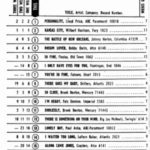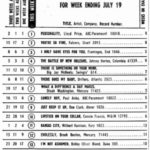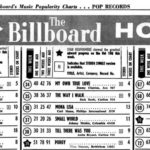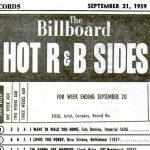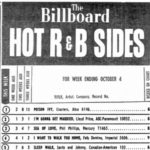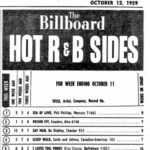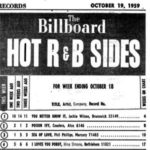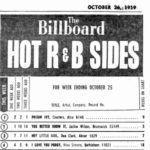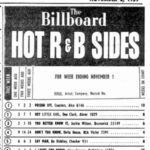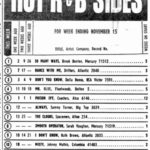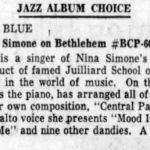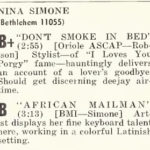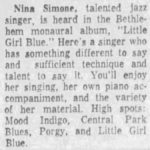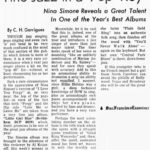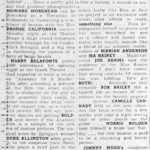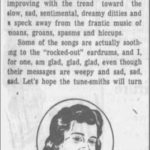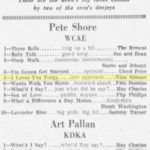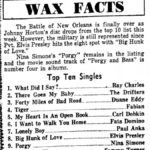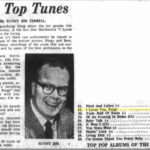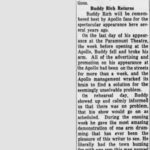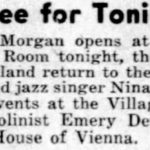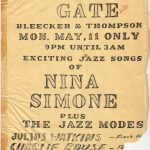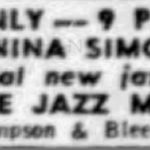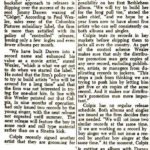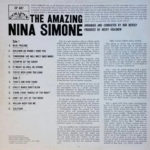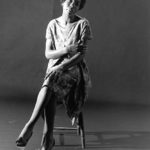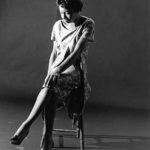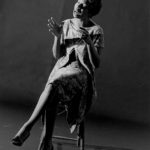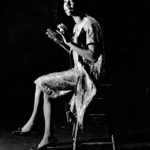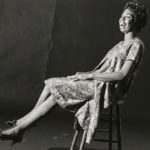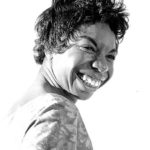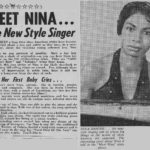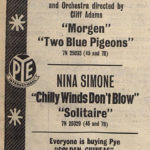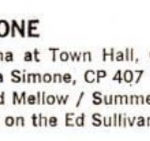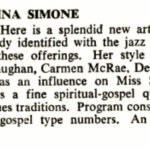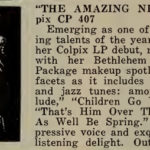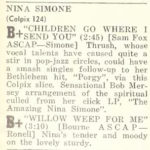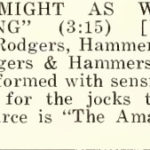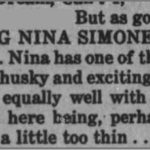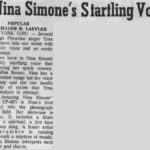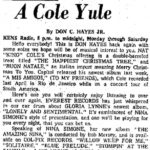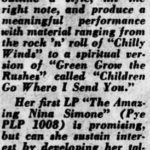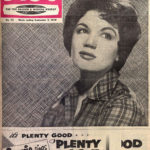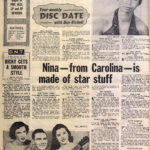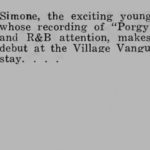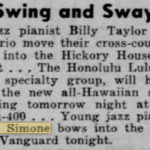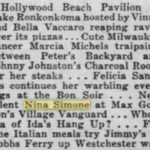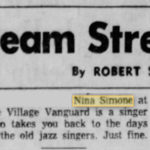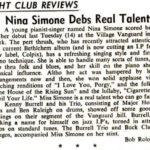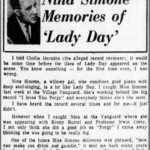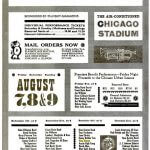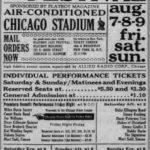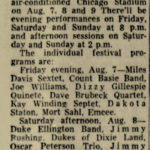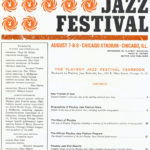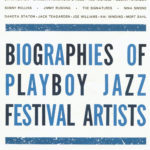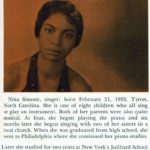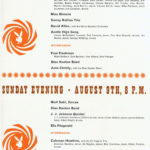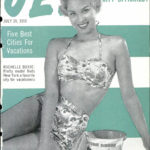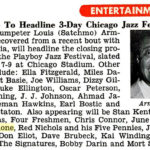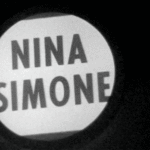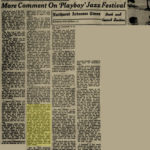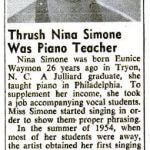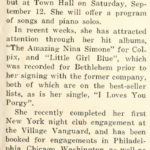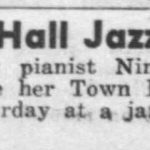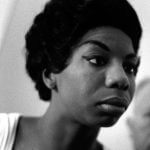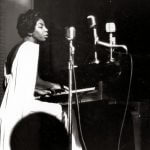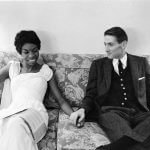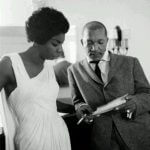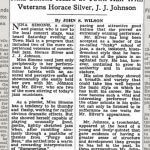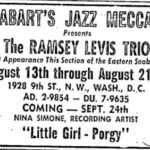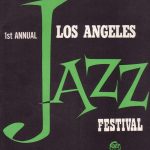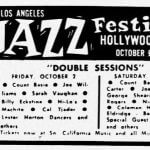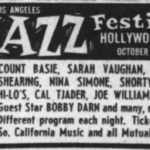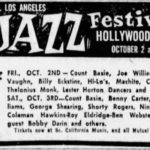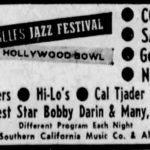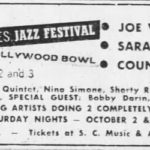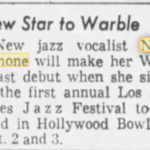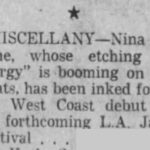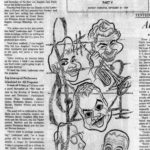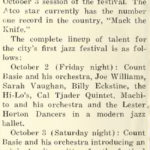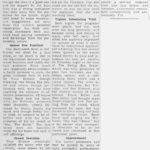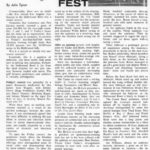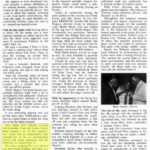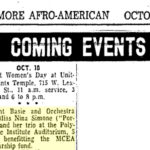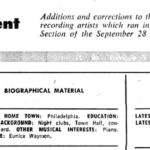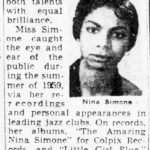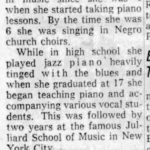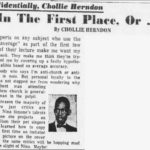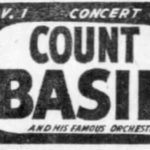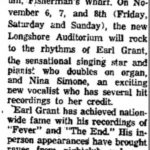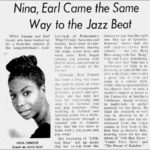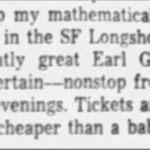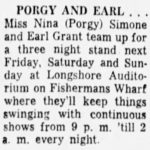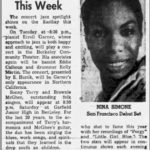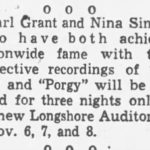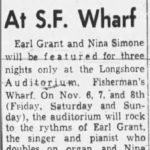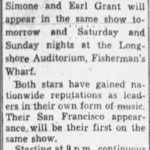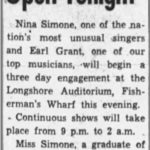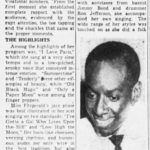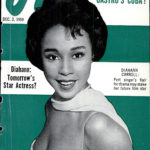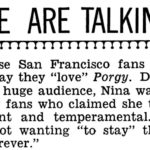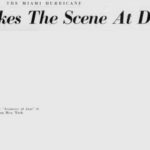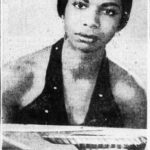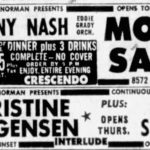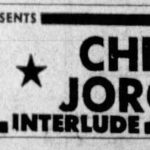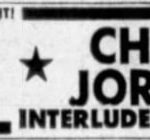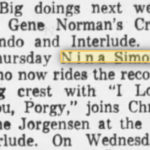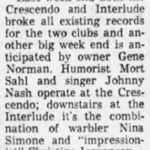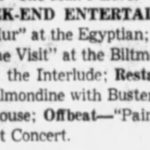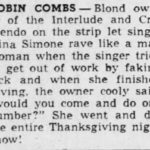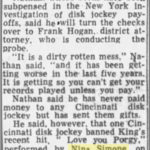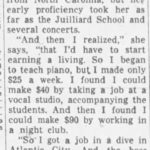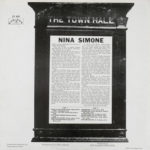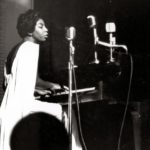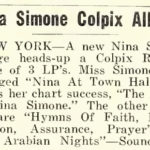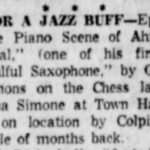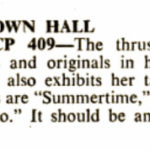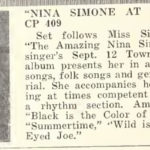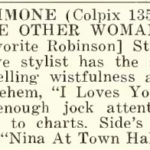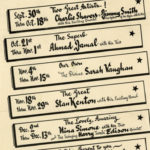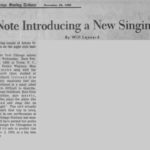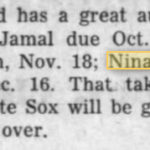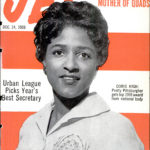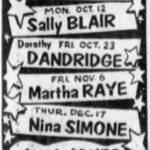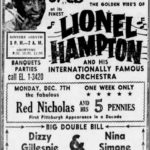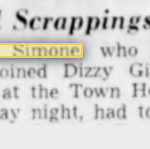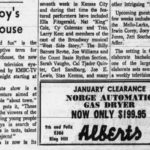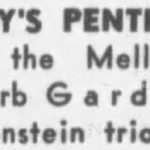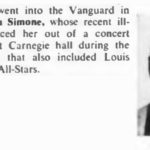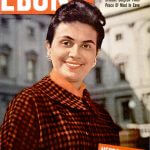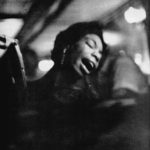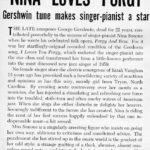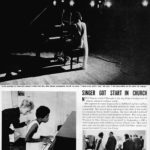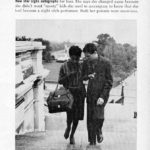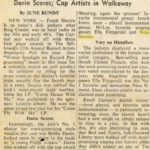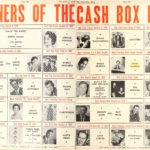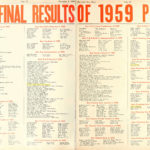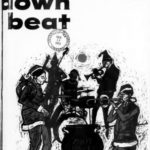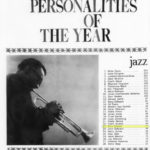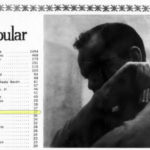1933-1959
At age five, Eunice became the official pianist of the Methodist Church of Tryon and began to attend a school for black children, the Tryon Colored School.
- Eunice and two of her sisters formed the Waymon Sisters Group. They performed in church and at outside functions.
- Mrs. Miller, the employer of Eunice’s mother, pays for Eunice’s first year of piano lessons with Mrs. Muriel Mazzanovich (“Miss Mazzy”).
Muriel Mazzanovich:
Mazzanovich studio:
Waymon Sisters:
click each to enlarge
Eunice – ages 12, 14, 16, and 17:
In 1945, at the age of 12 and with assistance from an education fund setup in her honor, Eunice enrolled in Allen High School for Girls (a private boarding school for Black girls), located in Asheville, NC, where she excelled and remained until graduation.
Eunice’s first recital, Saint Luke C.M.E. Church, age 10 – Tryon Daily Bulletin – 4/24/43:
Recital at Garrison Chapel Baptist Church, age 10 – Tryon Daily Bulletin – 5/15/43:
Recital at Saint Luke C.M.E. Church’s Autumn Bazar, age 13 – Tryon Daily Bulletin – 11/8/46:
Recital at Saint Luke C.M.E. Church, age 14 – Tryon Daily Bulletin – 8/19/47:
Fundraising recital in the Mazzanovich Studio, age 16 – 3/28/49:
(The above 3/28/49 program occurred on Easter Sunday, and the handbill was lettered by Garland Goodwin in the number of 50 original copies with Eunice’s last name misspelled. The recital was held in the Mazzanovich studio to raise money for Eunice’s ongoing private schooling.)
Glee Club of Allen High School Wins Honors, age 16 – Asheville Citizen-Times – 4/3/49:
Recital at Lanier Library in Tryon, age 16 – Tryon Daily Bulletin – 7/31/49:
Recital at Allen High School in Asheville, NC – Asheville Citizen-Times – 5/14/50:
- After her graduation, Eunice spent the summer of 1950 at the Juilliard School as a student of Carl Friedberg, preparing for an audition at the Curtis Institute of Music in Philadelphia.
- In August, Eunice’s family relocates from Tryon, NC to Philadelphia in order to be closer to Eunice and help support her while she prepares for the entrance audition at the Curtis Institute of Music.
- On April 7th, 1951, Eunice auditions at the Curtis Institute of Music for entrance, an achievement for which Eunice has been preparing and training since she was a young girl, but she is rejected. Only 3 out of 72 applicants to the piano department that year were accepted.
- For the rest of her life, Eunice suspected (and was told by individuals she believed had ‘inside’ knowledge) that her application had been denied because of racial prejudice, a charge the staff at Curtis have denied.)
- In April of 2003, upon recommendation from the Philadelphia chapter of the National Congress for Black Women, the Curtis Institute awarded Nina Simone with an honorary degree, which declared: “Honoris causa – in recognition of her contribution to the art of music.” Nina was notified of this award just days prior to her death.
- After being denied by the Curtis Institute, Eunice took private piano lessons with Vladimir Sokoloff, a professor at Curtis, although she could never re-apply to Curtis due to the fact that at the time they did not accept students over 21 years old.
- During this time Eunice also worked as a photographer’s assistant and as an accompanist at Arlene Smith‘s vocal studio.
- Eunice also supplemented her income during this time by giving private piano lessons from her family home in Philadelphia, the majority of her private students were from wealthy families.
The earliest known recordings of Nina performing took place in Philadelphia throughout 1954 & 1955.
Although these recordings, taken at rehearsals or live performances, were never intended for commercial release, Nina’s future husband/manager, Andrew Stroud, had strings added to eight tracks (arranged by Monk Higgins) and released them on a commercial album in 1970.
An additional track from the same time period (sans the added strings) was released by Stroud in 2008.
Atlantic City Press – 6/1/55:
Midtown Bar and Grill in Atlantic City was the venue of Eunice’s first public appearance and performance under the name “Nina Simone.”
Eunice created her moniker by combining the nickname ‘Nina’ from a childhood boyfriend named Chico and ‘Simone’ from French actress Simone Signoret, whom she had seen in the 1952 film Casque d’Or.
Eunice’s initial reasons for performing under the moniker “Nina Simone” were 1) she didn’t want her strict parents to discover the types of music she was playing and the venues in which she was performing, fearing that they’d disapprove of both and 2) she didn’t want the “snooty” kids she used to accompany to know that she had become a night club performer, thus Nina Simone was born.
Despite training for years to become a classical pianist, when she began playing in the club to support herself she was told that she’d also be expected to sing when she performed. Although she never intended to be a singer she needed to keep the job and so she did what was necessary: she sang.
The rest is now history.
Nina Simone was featured at the Midtown Bar through September.
Atlantic City Press – 7/2, 7/9, and 9/9/55:
While in Atlantic City during 1955 & 1956, Nina recorded a demo to showcase her talents which was never meant for commercial release.
Also, unbeknownst to her, she was recorded whilst performing live at an Atlantic City venue.
Tracks from the demo tape and the surreptitious recording were released on bootleg albums in 1964 & 1965.
From Nina’s autobiography:
I went ahead with the club dates, which were just the same as ever except for the fact that one night, without my knowing it, somebody recorded one of my sets. That night I sang “I Loves You, Porgy,” “Since My Love Has Gone,” “Black is the Color of My True Love’s Hair,” “Lovin’ Woman,” and “Baubles, Bangles and Beads,” and the recording appeared years later, first as a pirate album called ‘Starring Nina Simone.’ I had to take the record label to court in 1965 to stop them selling it. So the first album I ever made was a pirate that I never got paid for and knew nothing about.”
click each to enlarge
In the initial pressing of the album, “Mood Indigo” was listed on the album cover first but due to the popularity of Nina’s rendition of the Gershwin tune, “I Loves You, Porgy” was listed first on subsequent pressings:
Photos for the album cover were taken in Central Park NYC by Chuck Stewart:
Billboard – 12/58:
Billboard:
Cash Box:
Jet Magazine – 8/6/59:
Pittsburgh Courier:
Pittsburgh Sun-Telegraph:
Wilkes Barre Times Leader:
Disc Magazine:
Nina photographed on stage and backstage by Herb Snitzer:
Nina and Redd Foxx photographed backstage by G. Marshall Wilson:
NINA LOVES PORGY
The late composer George Gershwin, dead for 22 years, contributed powerfully to the success of singer-pianist Nina Simone when he wrote his celebrated folk opera, Porgy and Bess. For it was her startling-original recorded rendition of the Gershwin song, I Loves You Porgy, which rocketed the singer-pianist into the star class and transformed her from a little-known performer into the most discussed new jazz singer of 1959.
No female singer since the electric emergence of Sarah Vaughn 13 years ago has provoked such a bewildering variety of reactions and opinions as has this wiry, moody girl from Tryon, North Carolina. By creating acute controversy over her merits as a musician, she has injected a stimulating and refreshing new force into the troubled, strife-torn and often murky waters of American jazz. When she sings she either disturbs or delights her hearers. Seemingly indifferent to the furore she has created, Nina is riding the crest of her first success happily unleashed by that one indispensable must: a hit record.
Miss Simone is a singularly arresting figure who insists on going her own way, oblivious to criticisms and unsolicited advice. The puzzlement she has stirred up in the music world is the product of her odd style: a strange grafting of a thick, abrasive, almost masculine sound onto a sophisticated, classical music training. Her voice is a husky contralto that one writer described as a “combination of Marian Anderson and Ma Rainey.”
Nina Simone crashed through to the top from a background of church, classical, and jazz music. Her exposure to music began early in childhood and her mother, a domestic by day and a Methodist minister by night, was chiefly responsible. She played piano and sang in the choir in her mother’s church in Tryon, North Carolina. She later attended Juilliard School of Music and the Curtis Institute of Music. Five years ago she made two decisive steps: she changed her name from Eunice Waymon to Nina Simone and accepted in desperation a $90 a week singing job at the Midtown Club in Atlantic City. This led to other jobs and her first record album, Little Girl Blue, which contained the fateful, I Loves You Porgy.
